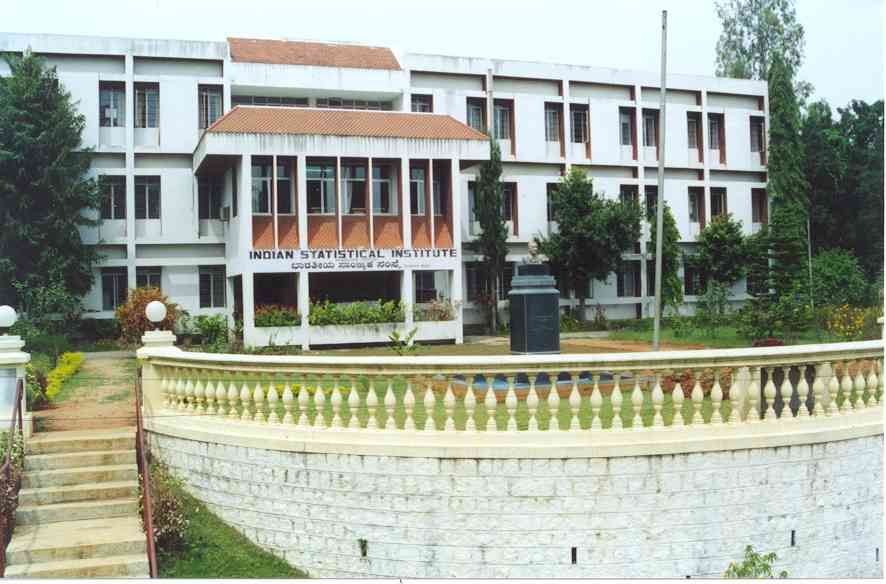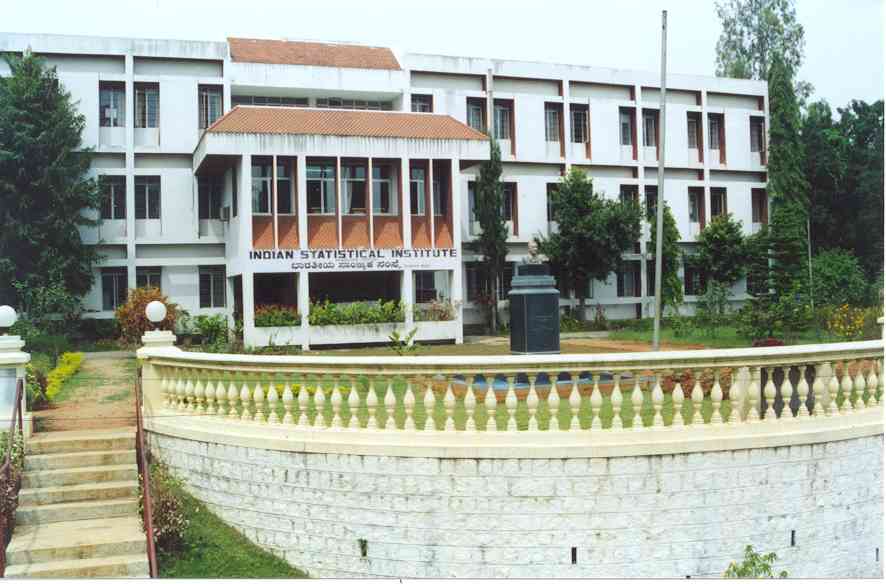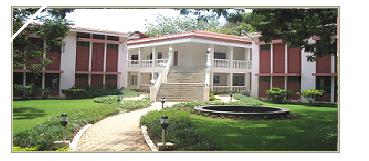 |
 |
Bangalore Probability Seminar 2013
Venue: Indian Statistical Institute (auditorium) and Indian Institute of Science (Mathematics dept)
Organizers: Siva Athreya and Manjunath Krishnapur
|

|
|
11 Nov, IISc, 2:00 PM
|
Admission Prices and Welfare in Queues
|
D. Manjunath (IIT, Bombay)
|
| |
A multiqueue system serves a multiclass population. Classes differ in
their valuation of time. Oblivious routing in which routing is not
informed by current queue status or past decisions is assumed. First, we
explore the structure of the routing fractions that maximise social
welfare. We then analyse the case customer are strategic and the queues
have an admission price. We then argue that admission prices can be set to
achieve optimal routing.
A second system will also be briefly described. Here there are two queues:
a FIFO queue and a bidding queue in which customers bid for priority.
Priorities are increasing in the order of the bids. The equilibrium
behaviour of this system is also presented.
Joint work with Tejas Bodas, A Ganesh and Murtuza Ali Abidin. |
|
11 Nov, IISc, 3:15 PM
|
Optimal Control of Markov Processes with Age Dependent Transition
Rates |
Mrinal Ghosh (IISc)
|
|
28 Oct, ISI, 2:00 PM
|
2D Ising Model: Scaling Limits and Magnetization Critical Exponent
|
Sreekar Vadlamani (TIFR, CAM)
|
| |
Quantum Curie-Weiss (QCW) random graphs, which are a generalization of Erdos-Renyi random graphs, were first introduced by Ioffe and Levit in 2007. In this talk, we shall first study some features of QCW model at criticality, and compare our observations with the ones made for classical Erdos-Renyi random graphs. After noting the similarities between the two, we shall move on to check if QCW does fall into the same universality class as the classical Erdos-Renyi random graph. By this we mean to compare the available results about the scaling limits of various homogeneous and non-homogeneous random graphs in the critical window with our results.
|
|
28 Oct, ISI, 3:15 PM
|
The Fleming-Viot limit of an interacting spatial population with
fast density regulation |
Ankit Gupta (ETH Zurich)
|
| |
Fleming-Viot processes were introduced in the context of
population genetics in 1979 and they have been very well-studied since
then. These processes have continuous sample paths over the space of
probability measures. Traditionally such processes arise as diffusion
limits of standard models in population genetics , such as the
Wright-Fisher model or the Moran model. The aim of this talk is to present
another class of models which lead to Fleming-Viot processes as diffusion
limits.
In particular, we consider population models in which the individuals
reproduce, die and also migrate in space. The population size scales
according to some parameter N, which can have different interpretations
depending on the context. Each individual is assigned a mass of 1/N and
the total mass in the system is called population density. The dynamics
has an intrinsic density regulation mechanism that drives the population
density towards an equilibrium. We show that under a timescale separation
between the slow migration mechanism and the fast density regulation
mechanism, the population dynamics converges to a Fleming-Viot process as
the scaling parameter N approaches infinity. We first prove this result
for a basic model in which the birth and death rates can only depend on
the population density. In this case we obtain a neutral Fleming-Viot
process. We then extend this model by including position-dependence in the
birth and death rates, as well as, offspring dispersal and immigration
mechanisms. We show how these extensions add mutation and selection to the
limiting Fleming-Viot process. All the results are proved in a multi-type
setting, where there are many types of individuals interacting with each
other. We illustrate the usefulness of our convergence result by
discussing applications in population genetics and cell biology.
|
|
7 Oct, ISI, 2:00 PM
|
2D Ising Model: Scaling Limits and Magnetization Critical Exponent
|
Federico Camia (New York University, Abu Dhabi)
|
| |
The Ising model was introduced by Lenz in the 1920s to study
ferromagnetism and is probably one of the most studied models in modern
physics. Despite that, it is still today a fertile source of interesting
results. In this talk I will consider the standard Ising model on the
square lattice (with mesh size a) at the critical temperature with a
positive external magnetic field h. I will discuss recent results on the
continuum scaling limit (a --> 0) of the magnetization field and a fairly
simple rigorous proof of the fact that the magnetization M(h) behaves (up
to constant factors) like h^{1/15} as h tends to zero. This is joint work
with Christophe Garban and Charles M. Newman.
|
|
7 Oct, ISI, 3:15 PM
|
Determinantal point processes in the plane from products of random
matrices |
A Tulasi Ram Reddy (IISc, Bangalore)
|
| |
In this talk we shall show the density of eigenvalues for three
classes of random matrix ensembles is determinantal. First we derive the
density of eigenvalues of product of $k$ independent $n\times n$ matrices
with i.i.d. complex Gaussian entries with a few of matrices being
inverted. In second example we calculate the same for (compatible) product
of rectangular matrices with i.i.d. Gaussian entries and in last example
we calculate for product of independent truncated unitary random matrices.
|
|
23 Sep, IISc, 2:00 PM
|
One-dimensional Voter Model Interface Revisited
|
Siva Athreya (ISI, Bangalore)
|
| |
We consider the voter model on Z, starting with all 1's to the left of the origin and all 0's to the right of the origin. It is known that if the associated
random walk kernel p has zero mean and a finite r-th moment for any $r>3$, then the evolution of the boundaries of the interface region between 1's and 0's converge in
distribution to a standard Brownian motion $(B_t)_{t>0}$ under diffusive scaling of space and time. This convergence fails when p has an infinite r-th moment for any $r<3$, due to the loss of tightness caused by a few isolated 1's appearing deep within the regions of all 0's (and vice versa) at exceptional times. In this talk, we show that as long as p has a finite second moment, the measure-valued process induced by the rescaled voter model configuration is tight, and converges weakly to the measure-valued process $1_{x < B_t}dx$, $t>0$.
|
|
19 Aug, ISI, 2:00 PM
|
Unicellular maps in high genus
|
Gourab Ray (University of British Columbia)
|
| |
A map is a graph embedded on a surface viewed up to orientation preserving
homeomorphisms. This work is motivated by the recent growth in interest
for creating hyperbolic versions of uniform infinite planar maps by
considering local limits of maps embedded on a high genus surface.
In this talk we shall consider unicellular maps, that is maps with one
face embedded on a surface whose genus is linear in the size of the map. We
study its large scale structure, viz, the diameter and local injectivity
radius. Also, we show that locally they behave like a supercritical
Galton-Watson tree and obtain its local limits. Part of this work is
joint with Omer Angel, Guillaume Chapuy and Nicolas Curien.
|
|
19 Aug, ISI, 3:15 PM
|
Rigidity phenomena in random point sets and applications
|
Subhroshekhar Ghosh
(Princeton university)
|
| |
In general naturally occurring (infinite) point processes, it turns out that the number (and other statistical properties) of the points inside a finite domain are determined, almost surely, by the point configuration outside the domain. This curious phenomenon is referred to as "rigidity". We will discuss rigidity and its applications. Depending on time, we will talk about applications to stochastic geometry and to random instances of some classical questions in Fourier analysis.
|
|
22 Apr, TIFR-CAM, LH111, 2:00 PM
|
On the (tail) distributions of functionals of random excursion sets
|
Marie Kratz (ESSEC Business School Paris, France
and MAP5 UMR8145, Univ. Paris Descartes)
|
| |
When a random field ($X_t : t \in R^d$) the excursion set is thresholded on a given level $\gamma$ the excursion set is given by its indicator $1_[\gamma, \infty) (X_t)$. The purpose of this work is to study several functionals (as established in Stochastic Geometry; see e.g. Matheron, Stoyan et al.) of these random excursion sets and the capacity functional for specic sets. Tails of some related distributions are also considered. Borrowing tools from the literature on level crossings and stochastic geometry, we obtain results on the (tail) distribution of the chord functions, which may be used to describe random porous media. Other results concern the capacity functional of families of sets which consist of two or more linear segments, originating from a common point.
|
|
22 Apr, TIFR-CAM, LH111, 3:15 PM
|
Translation Invariant Diffusions
|
B. Rajeev
(ISI, Bangalore)
|
| |
Given diffusion and drift coefficients in the space of tempered distributions and a suitable initial distribution , we construct continuous strong Markov processes that are "translation invariant" in a special sense.
|
|
8 Apr, ISI, 2:00 PM
|
Convergence of Subtree Pruning Processes
|
Wolfgang Lohr (Universitat Duisburg- Essen)
|
| |
In 1998, Aldous and Pitman constructed a tree-valued Markov chain by
pruning off more and more subtrees above randomly chosen edges of a
Galton-Watson tree. Recently, Abraham, Delmas and He considered a similar
process, where the cut-points are chosen in a degree-dependent way. In the
same spirit, prunings of continuous trees, such as the Brownian CRT or L?vy
trees, were studied by various authors. No precise link has been given
between the prunings of discrete and continuous trees.
We give a unified framework by regarding them as the same Feller-continuous
Markov process with different initial conditions. The state space, which we
introduce, consists of measure R-trees with an additional pruning measure,
which is not required to be locally finite. We obtain Skorohod convergence
of some of the previously studied pruning processes. (joint work with
Guillaume Voisin and Anita Winter)
|
|
8 Apr, ISI, 3:15 PM
|
Reverse entropy power inequalities
|
Mokshay Madiman
(University of Delaware, USA)
|
| |
In the 1980's, V. Milman discovered the reverse Brunn-Minkowski inequality, which provides a dimension-free inverse of an affine-invariant formulation of the
Brunn-Minkowski inequality. Milman's inequality was a seminal result in the asymptotic theory of Banach spaces and in convex geometry. With S. Bobkov, we have
developed a probabilistic version of Milman's inequality, which may be seen as an inverse of the entropy power inequality of Shannon and Stam. The talk will describe
this reverse entropy power inequality in the setting of log-concave measures, and discuss how far it can be extended beyond log-concave measures. We will also discuss
quantitative bounds that hold when dealing with i.i.d. random vectors; such results are related to questions of additive combinatorics in R^n. |
|
18 Mar, IISc, 2:00 PM
|
Comparison of clustering properties of point processes and applications to random geometric models
|
Yogeshwaran Dhandapani (Technion, Israel)
|
| |
I shall talk about some some examples, methods, and recent results involving comparison of clustering properties of point processes. The basic observation is that void probabilities and
moment measures are two complementary tools for capturing clustering phenomena in point processes. Various global and local functionals of random geometric models driven by point processes admit more or less explicit bounds involving the void
probabilities and moment measures, thus allowing to study the impact of clustering of the underlying point process. I shall provide examples of clustered point processes as well as sketch some recent results obtained using the afore-mentioned comparison tools. These results pertain to percolation and coverage properties of the Boolean model, the SINR model, subgraph counts in random geometric graphs, and more generally, U-statistics of point processes.
|
|
18 Mar, IISc, 3:15 PM
|
Continuous minimax theorems
|
Madhushree Basu
(IMSc, Chennai)
|
| |
A minimax theorem is a result that gives a characterization of
eigenvalues of compact self adjoint operators on Hilbert spaces. In 1949 Ky
Fan characterized sum of first $k$ eigenvalues of an $n \times n$ Hermitian
operator on $\mathbb C^n$. This gave an extremum property of the sum of the first
$k$ eigenvalues for Hermitian transformations without referring to any
eigenvector. Our work grew out of the search for an extension of Ky Fan's
theorem to such a (finite) von-Neumann algebraic setting. We prove a
version of Ky Fan's theorem for a self adjoint element having a non atomic
distribution in a $II_1$ factor, and we also give an alternate proof for
the finite dimensional version of Ky Fan's original theorem.
|
|
25 Feb, ISI, 3:15 PM
|
The R environment: A high-level overview
|
Deepayan Sarkar
(ISI, Delhi)
|
| |
R is a language and environment for statistical computing and graphics that runs on a wide variety of platforms. In this talk, we give a
high-level overview of R and try to outline the features that have led to its popularity in the statistics community.
|
|
11 Feb, IISc, 2:00 PM (LH-2)
|
Pricing Defaultable Bonds in a Markov Modulated Market.
|
Mrinal Ghosh (IISc, Bangalore)
|
| |
We address the problem of pricing defaultable bonds in a Markov modulated market. Using Merton's structural approach we show that various types of defaultable bonds are combination of European type contingent claims. Thus pricing a defaultable bond is tantamount to pricing a contingent claim in a Markov modulated market. Since the market is incomplete we use the method of quadratic hedging and minimal martingale measure to derive locally risk minimizing derivative prices, hedging strategies and the corresponding residual risks. The price of defaultable bonds are obtained as solutions to a system of PDEs with weak coupling subject to appropriate terminal and boundary conditions. We solve the system of PDEs numerically and carry out a numerical investigation for the defaultable bond prices. We compare their credit spreads with some of the existing models. We observe higher spreads in the Markov modulated market. We show how business cycles can be easily incorporated in the proposed framework. We demonstrate the impact on spreads of the inclusion of rare states that attempt to capture a tight liquidity situation. These states are characterized by low risk free interest rate, high payout rate and high volatility. |
|
11 Feb, IISc, 3:15 PM (LH-2)
|
Random fields on sphere:an application to cosmology.
|
Sreekar Vadlamani
(TIFR, Bangalore)
|
| |
We shall begin with a brief introduction of the cosmic microwave background (CMB) radiation. Then we shall discuss various analytical tools (assumptions) entailing the analysis of the CMB data, which primarily relates to representation of the CMB data as a random field on a sphere. In order to further perform statistical analysis of such a random fields, we use the standard harmonic analysis on sphere, and obtain some distributional identities which can be labeled as "high frequency CLTs", which in turn can be used for statistical hypothesis testing of CMB Data.
|
|

